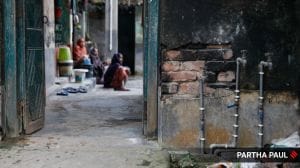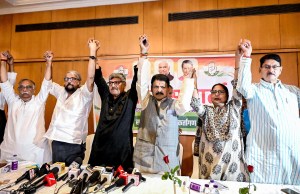Higher education, lowest standards
UGC survey shows 90% of colleges, 68% of universities assessed medium or poor; half of Class XII students never even enter college

In this season of celebrating toppers and staggering cut-offs in college admissions across the country, the University Grants Commission (UGC) has come up with a startling admission: Over half of the students who pass Class XII don’t even enter the higher-education sector; 90 per cent of colleges and 68 per cent of universities across the country are of middling or poor quality. On almost all indicators, from faculty standards to library facilities, from computer availability to student-teacher ratio, higher education is in crying need for an upgrade.
The “quality gap” in both universities and colleges is alarming: 25 per cent faculty positions in universities remain vacant; 57 per cent teachers in colleges do not have either an M Phil or PhD; there is only one computer for 229 students, on an average, in colleges.
These results of the first-ever official assessment of the higher education system, conducted by UGC’s Bangalore-based National Assessment and Accreditation Council (NAAC), have been presented to Prime Minister Manmohan Singh by HRD Minister Arjun Singh. The assessment was conducted on 123 universities and 2,956 colleges across India — an estimated 60% of these institutions were private, the rest government-run.
Institutions participated on a voluntary basis. It was based on seven broad parameters: curriculum, teaching, research and consultancy, infrastructure, student support, management and innovative practices.
The data acquire extra significance given the boom in the higher education sector and the exponential rate of growth expected. The number of universities has risen from 20 in 1947 to 378 in 2006; colleges, from 500 to 18,064 during the same period. And yet, “little more than half, 52.61 per cent, of those who passed the 12th standard get into colleges and universities, the other half drops out,” said UGC chairman Sukhdeo Thorat.
The dropout rate among Scheduled Tribes is maximum (61.5 per cent), followed by Scheduled Castes (51.21) and Other Backward Classes (50.09).
“We followed a rigorous methodology for each institution which, in an average, took as long as seven months,” said NAAC’s director V S Prasad. “This included a self-appraisal, a peer review and an independent monitoring.”
So far, no IIM, IIT or NIT (formerly RECs) have been assessed by the council — these anyways are likely to be Grade A institutions, said Prasad.
The key findings (see charts) are startling:
• Of 123 universities, only a third is of “good quality,” over a half are B-grade and a sixth C-grade
• Among 2,956 colleges, only 10 per cent made the Grade A cut; 66 per cent were B-grade and 24 per cent C-grade.
Thorat, present during the meeting with the PM, told The Sunday Express: “We have to focus on bridging the quality gap between A-grade and the rest. There are mainly two reasons for this quality gap: availability and quality of facilities and quality of faculty.”
Thorat says that one key factor behind the quality gap is the under-investment in higher education since 1980s. Between 1951 and 1980, the government spending on higher education sector grew at the rate of 17 per cent, but then it dipped to 10 pc between 1981 to 2003-04.
The result, the UGC claims, is that it’s unable to fund 60 per cent of colleges and 40 per cent of state universities. To “improve the situation”, the UGC, backed by the HRD ministry, has sought Rs 77,779 crore as funds for the XIth five-year-plan. And plans to make NAAC assessment and accreditation mandatory, link funding to performance, expand operations in districts with enrolment less than 10 per cent, increase funds to institutions with higher share of students from the poor and the marginalised sections.
Quality status of the universities and colleges sector
Colleges
Assessed by NAAC 2956
Grade A 10%
Grade B 66%
Grade C 24%
Universities
Assessed by NAAC 123
Grade A 32%
Grade B 52%
Grade C 16%



- 01
- 02
- 03
- 04
- 05




























